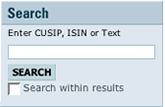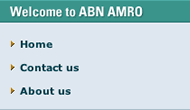







|
|
|
| What it Is | At-a-Glance | For Example | What If | |||||
|
What are Out-Performance Notes? Out-performance Notes may be linked to a variety of underlying assets, but are typically linked to indices or exchange traded funds. They may be structured around either a ‘positive’ or ‘negative’ view of the future performance of the underlying asset. For example, if held to maturity, Out-performance Notes with a ‘positive view’ give investors an opportunity to participate in a multiple of any appreciation of an underlying asset up to a predetermined cap. These are typically short-dated investments that do not provide for regular coupon payments. Out-performance Notes are not principal protected; therefore, 100% of an investor’s principal will be at risk. This means that Investors may lose some or all of their initial investment in the notes if the underlying asset declines in value (‘positive view’ note). Out-performance Notes are a tool for the investor seeking enhanced returns by taking advantage of short-term market trends. For example, in a structure with a ‘positive view’, investors in out-performance notes forgo any appreciation in the underlying asset above the predetermined cap in order to benefit from a multiple of the appreciation of the underlying asset up to such cap. Investors in a ‘positive view’ note also face one-to one downside risk on the underlying asset. Because of the predetermined cap, investors never receive at maturity an amount greater than a predetermined amount per note, regardless of how high or low the price or value of the underlying asset is during the term of the notes or on the determination date. |
||||||||